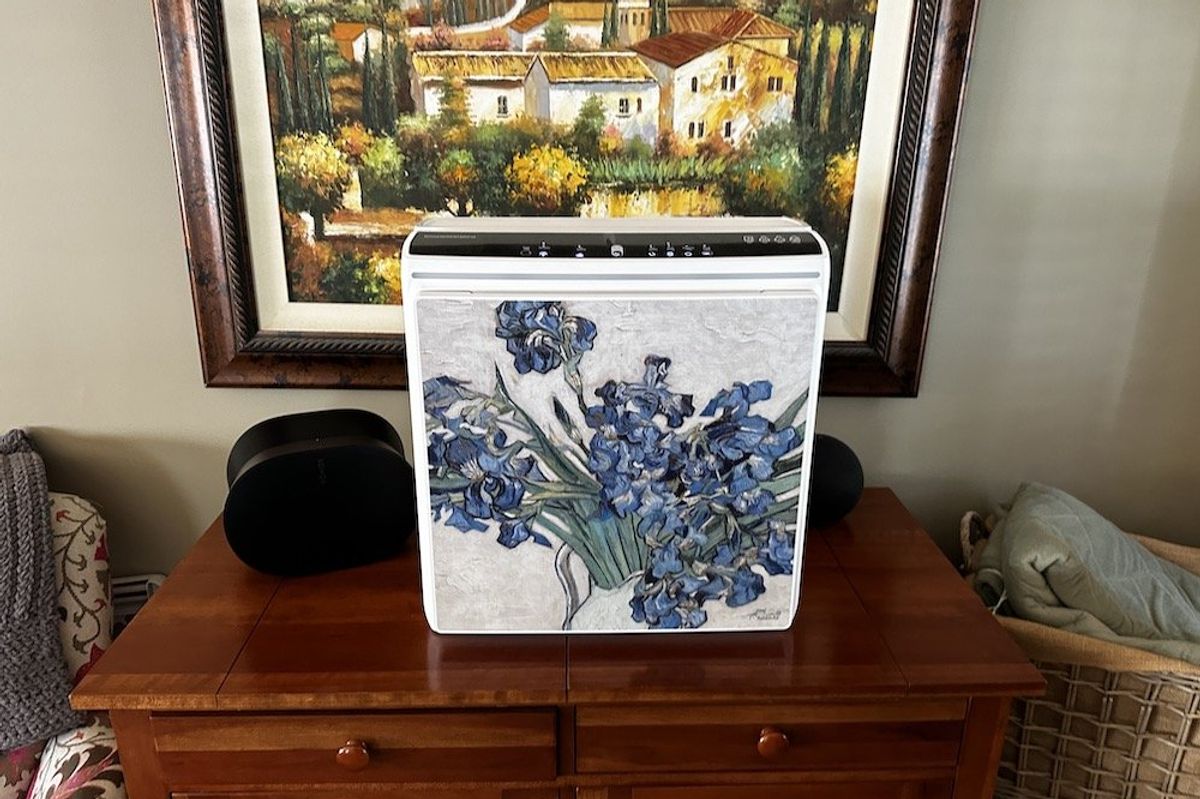Health Devices

GearBrain
Smart Air Monitors vs. Smart Air Purifiers: What’s the Difference?
Learn how smart air monitors and smart air purifiers work, what makes them different, and which one is right for your home or office.

Learn how smart air monitors and smart air purifiers work, what makes them different, and which one is right for your home or office.
Indoor air quality has become a top concern as people spend more time at home and become aware of health risks linked to pollution, allergens, and toxins. Two popular solutions in the smart home category are smart air monitors and smart air purifiers. While both aim to improve your living environment, they serve different functions.
Understanding how they work—and how to know which one you need—can help you make better decisions about your health and your home.
 The INKBIRD Monitor will reveal the colors of the air qualityGearBrain
The INKBIRD Monitor will reveal the colors of the air qualityGearBrainA smart air monitor is like a diagnostic tool. It tracks the quality of the air in your space using sensors that detect pollutants, gases, and environmental conditions. Common things a smart air monitor measures include:
Smart air monitors connect to your phone or smart home system, offering real-time air quality data. Some models can automate your environment by triggering a fan, air purifier, or HVAC system when air quality deteriorates.
A smart air monitor’s job is to inform you, not fix the problem. It tells you when your air quality drops so you can take action — such as turning on an air purifier or opening a window.
 Coway Airmega 400 Smart Air PurifierAmazon
Coway Airmega 400 Smart Air PurifierAmazonA smart air purifier actively cleans your air by drawing it through filters that remove pollutants. Most use a combination of:
Smart air purifiers can be controlled via apps, voice assistants, or automation rules. Some have built-in sensors to adjust their speed based on current air conditions.
Smart air purifiers are designed to remove harmful particles and gases, making the air safer to breathe.
 Dreo Macro Max S Air PurifierGearBrain
Dreo Macro Max S Air PurifierGearBrainYes — if any of these apply:
Even if you don’t have specific health concerns, purifiers can improve comfort and reduce fatigue or headaches related to poor air quality.
 The Dyson Pure Hot+Cool is a fan, heater and air purifierDyson
The Dyson Pure Hot+Cool is a fan, heater and air purifierDyson Sensibo Air Pro is a smart AC controller that can monitor the air inside your home.Sensibo
Sensibo Air Pro is a smart AC controller that can monitor the air inside your home.SensiboFor many people, yes. Air purifiers aren't just gadgets — they remove real pollutants like dust mites, smoke particles, mold spores, and chemicals that can cause health issues. The EPA and medical experts recommend them, especially in homes with poor ventilation, pets, or sensitive occupants.
Here are key features to prioritize:

Monitor Rabbit Air A3 Ultra Quiet Air Purifier's air filters in app or on the top controls.
GearBrainThe filtration system is the most critical feature. A True HEPA filter removes fine particles like allergens and smoke. If you also want to remove odors or chemicals (like VOCs), look for a carbon filter as well.
 The Coway Airmega 150 air purifier costs\u00a0$190Coway
The Coway Airmega 150 air purifier costs\u00a0$190CowayIdeally, yes — or at least in the most used rooms. Air purifiers work best in single enclosed spaces, so having one in your bedroom, living room, or nursery makes a big impact. If budget is a concern, start with the room where you spend the most time or where air quality tends to be worse (such as near kitchens or windows).
 Airthings Renew Air PurifierGearBrain
Airthings Renew Air PurifierGearBrainYes — high-quality air purifiers with HEPA filters effectively remove dust and dust mites from the air. While they don’t eliminate dust already settled on surfaces, they prevent buildup by capturing airborne particles before they land.
 The Awair Element air monitor can link to Amazon Alexa through an Alexa SkillGearBrain
The Awair Element air monitor can link to Amazon Alexa through an Alexa SkillGearBrain| Feature | Smart Air Monitor | Smart Air Purifier |
|---|---|---|
| Function | Tracks air quality | Cleans the air |
| Sensors | Yes (PM2.5, VOCs, CO₂, etc.) | Sometimes basic, or none |
| Filtration | None | HEPA, Carbon, UV-C |
| Smart Features | App alerts, integration triggers | Remote control, automation |
| Removes pollutants? | No | Yes |
| Main benefit | Informs you to take action | Actively improves air quality |
Brands I recommend you consider if looking for a good smart air monitor or smart air purifier this allergy season:
If you’re trying to decide between a smart air monitor and a smart air purifier, the answer may be both. A monitor tells you when your air is bad — a purifier makes it better. Together, they form a complete air quality management system for your home.
Want cleaner, safer air? Start with a purifier. Want control and insight? Add a monitor. And if you’re serious about health, comfort, and smart living, consider integrating both into your smart home ecosystem.
Check out The GearBrain, our smart home compatibility find engine, to find the smart air purifiers compatible with your existing smart products or ones that work with Google Assistant and Amazon Alexa-enabled devices.
GearBrain Compatibility Find Engine
A pioneering recommendation platform where you can research,
discover, buy, and learn how to connect and optimize smart devices.
Join our community! Ask and answer questions about smart devices and save yours in My Gear.
